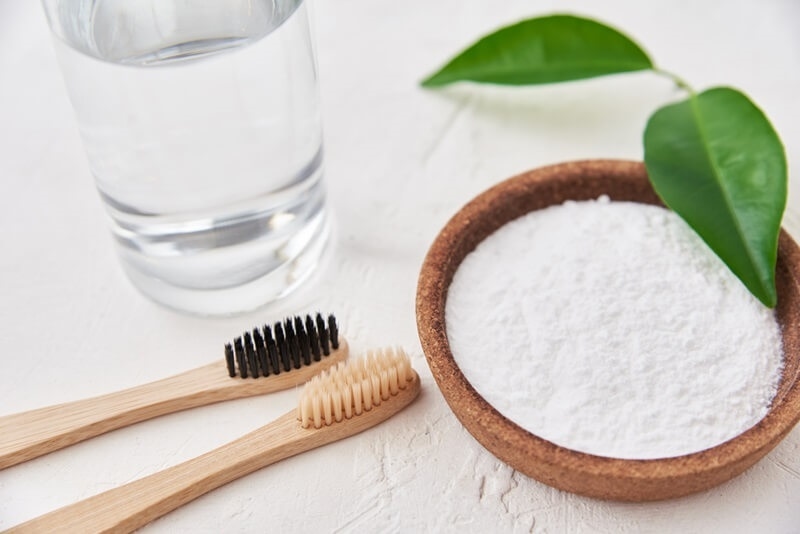
Have you ever thought about what factors make a toothpaste work better? For a very long time, one of the most powerful tools in dental care has been baking soda toothpaste. It is a simple thing famous for its ability to clean, whiten, and even get rid of bad breath caused by bacteria, and this compound has always remained constant.
We will find out here how baking soda toothpaste operates, its advantages, and why it may be the right supplement to your daily oral hygiene routine.
Baking soda, or sodium bicarbonate, is a mild alkaline compound that has been used in homes for the purposes of cleaning, cooking, and personal hygiene for a very long time. It is free from any kind of harsh chemicals, and its natural properties make it perfect for oral health. In the case of baking soda, a toothpaste becomes a safe abrasive, thus making the removal of surface stains and the deposits of dental plaque without the destruction of tooth enamel possible.
Reasons that make baking soda the best are:
Because it naturally cleans and its abrasive action is mild, baking soda toothpaste can be referred to as a product of fewer risks for people who opt for simple and efficient ingredients.

To understand the effectiveness of sodium bicarbonate in toothpaste, we need to examine its chemistry. The main feature of sodium bicarbonate that is responsible for its good work is its alkaline nature. This feature makes it very good at counteracting the acid that leads to the wearing away of tooth enamel and the formation of cavities.
During the moment when the baking soda is put into action, it can combine with the acids present in the oral cavity to obtain a neutral pH. This environment is thus friendly to the tooth surface because it protects it and is good for the gums too.
The use of baking soda toothpaste on a daily basis can bring some benefits apart from the whitening effect. The use of this product will make your mouth very healthy; you will have fresh breath and clean teeth. Here, we have taken a close look at some of the great benefits of baking soda in oral care:
The pH level of your mouth has a significant effect on your dental health. If your mouth becomes very acidic, then tooth enamel can be eroded thus making your teeth vulnerable to decay. Fortunately, alkaline toothpaste like those containing baking soda can help.
Alkaline toothpaste elevates the pH of saliva, thus it is able to restore equilibrium, and, as a result, enamel is protected from wear. At the same time, a safe place is created where dangerous bacteria cannot thrive thus the chances of infections of the gums and cavities are reduced.
One of the main points that people care about and hence decide to switch to baking soda toothpaste is the whitening effect. In contrast to chemical whiteners, which mainly use peroxide, baking soda achieves the same effect by gently removing the stains from the teeth’s surface.
Through this natural way of cleaning, over time, the result will be a smile that is considerably brighter without the occurrence of tooth sensitivity, which is a common issue when chemical whiteners are used.
This toothpaste is safe for the majority of people; however, proper usage will give you the best results and also be safe.
Some tips for safe brushing are as follows:
If used moderately, it can make your breath pleasant and keep your oral cavity fresh and bright without the disadvantages that come with harsh whitening products.
It is a common question among a lot of people if one can totally replace a traditional toothpaste with a baking soda one. Most likely, the answer depends on your needs. Conventional toothpaste is typically fortified with fluoride, which is beneficial to enamel as it both strengthens and protects it from caries. On the other hand, baking soda dentifrice is more oriented to the use of natural agents for cleaning and whitening.
Here is a brief comparison that will help you make up your mind:
Currently, many toothpastes have both fluoride and baking soda so that you can get the best of both worlds—protection and brightness.
You can certainly prepare your own baking soda paste right in your kitchen. Nevertheless, you should also be careful and never go overboard.
The following is a simple homemade version that you can make from time to time:
Mix all the ingredients until the mixture is smooth, and use it for teeth polishing once or twice weekly. This enables you to get baking soda benefits in the most natural way. However, keep in mind that homemade pastes are fluoride-free, so do not replace your regular toothpaste with them for everyday use.
Baking soda paste is one of the best natural dental products, and everyone can include it in their regular dental care. Its mild abrasiveness, natural cleaning abilities, and baking soda properties make it ideal for keeping the mouth clean without using harsh products. As an alkaline toothpaste, it whitens teeth while balancing the oral cavity to drive away bacteria and acid.
Using sodium bicarbonate will lead to cleaner, whiter, healthier teeth in your oral hygiene routine. It doesn't matter if you go for a store-bought brand or make your own at home.
This content was created by AI